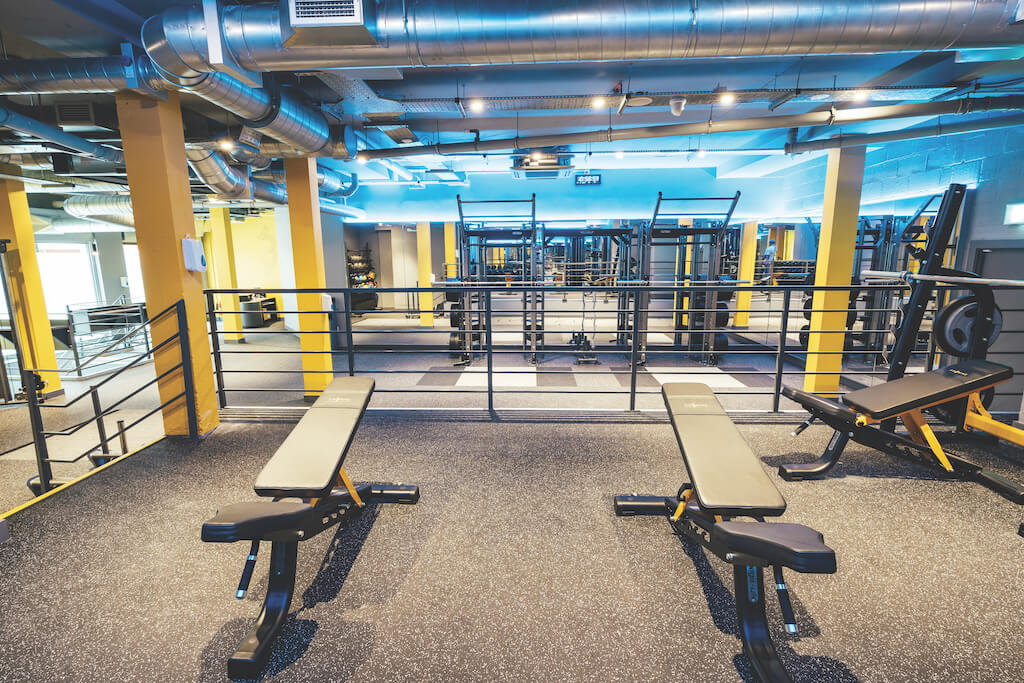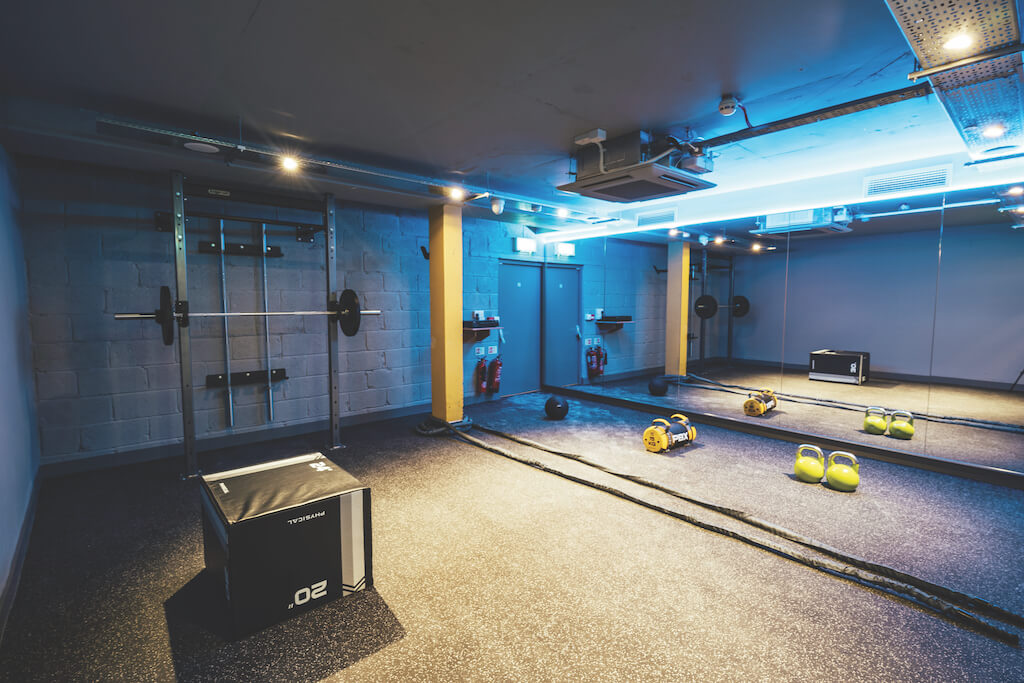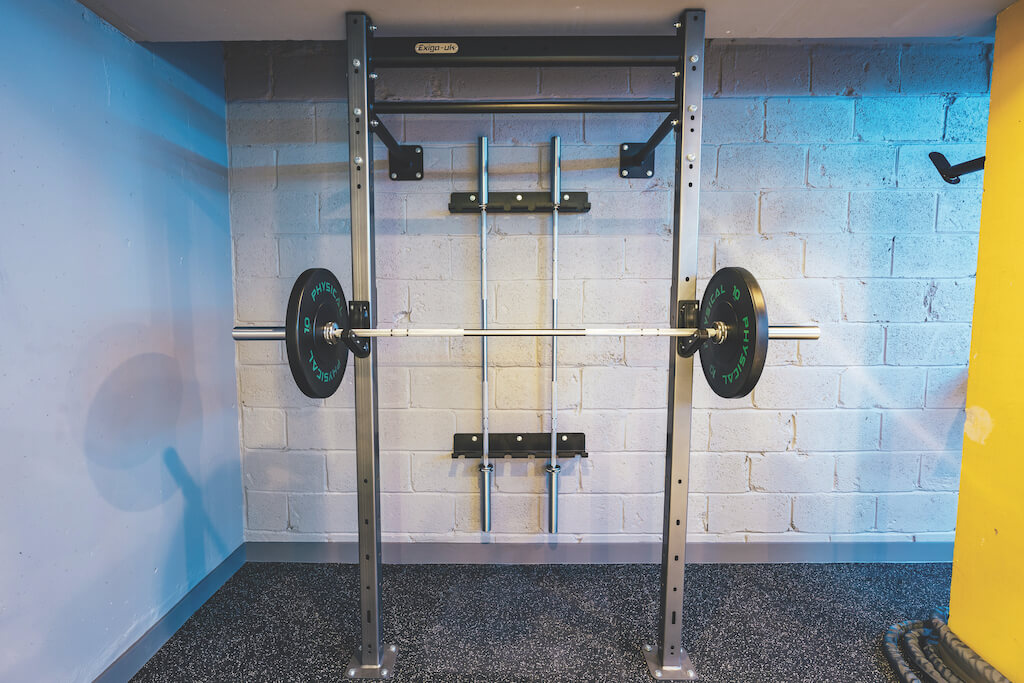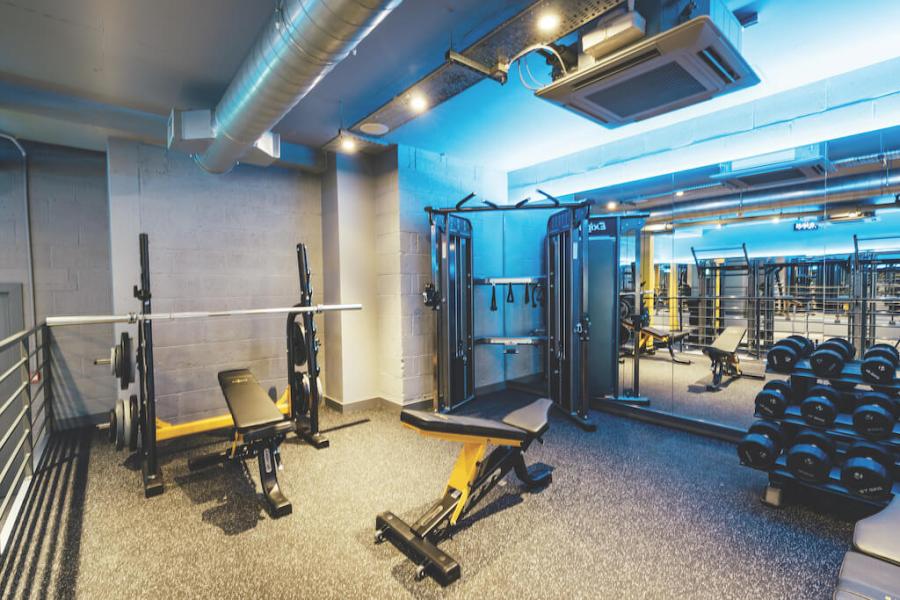When the UK locked down in March 2020, no one could have predicted how long we’d be working out from home.
But one year on, we’ve grown used to using the tools at hand, with sofas, towels and food tins all coming into play.
Now, since gyms reopened on 12 April, there’s a temptation to wipe our minds of the trials and tribulations of the past year and bound giddily back to the heaviest free weights we can find.
In a word: don’t. You might not be the lifter you were a year ago. And that’s not necessarily a bad thing.
If you want to maximise progress and minimise injury when you get back in the gym, read this first.
Who knows, you might just find that a year’s worth of cardio, calisthenics and core focus has set you up for a level of fitness the you-of-before never even thought possible.

Photography courtesy of Six3Nine.com
Reasons to return to the gym
Most former gym-goers will be split into one of two camps about the great reopening: those who’ve seen the light of minimal-kit, flexible workouts and won’t be going back any time soon, and those who have been desperately counting down the days to their barbell reunion.
Even if you fall into the former camp, there’s a scientific argument to encourage picking up those dumbbells once again.
Not only has lifting weights been proven to stimulate your body’s growth hormones, but a 2017 study in the journal PLOS One found that gym members were 14 times more aerobically active than their non-gym-going counterparts.
Aside from general fitness, it’s no secret that those who use a weighted gym programme tend to gain more muscle. The reason? Progressive overload. And unless you’ve got a home gym to make Mark Wahlberg jealous, it’s unlikely you’ve been able to make it happen at home.
“With progressive overload, the most important thing to do is to just add weight,” says qualified sports scientist and PT to the stars Luke Worthington.
“If you’ve been working out at home with a pair of dumbbells or a kettlebell, you have been keeping active, but to build strength you need to continually challenge the muscles.”
While gym-goers who’ve stayed regularly active during lockdown might have retained their movement quality and range of motion, Worthington says that the same likely won’t apply to how much you can lift.
“It’s been a year, really, so there will have been a decline in muscular strength,” he explains – even taking into account the brief reopening of gyms in late 2020.
“When you get back to the gym this time, you have to swallow the ego a little bit and step things back in terms of weight selection, in terms of load and in terms of movement selection, too,” he says.
“You’re just going to have to go back to basics for a little bit, accept that’s how things are and rebuild from there.”

Before you rush back to your pre-pandemic routine, ‘grease the groove’ and get re-used to the mechanics of weight lifting
How to return to the gym safely and effectively
We’ve established that serious muscle is usually forged in the furnace of the free weights section. But if you don’t want to get burned, you’ll have to be careful when you’re hitting the bench after a year away.
“It’s all about going in quite slowly,” says Ceri Clarke, a trainer at Covent Garden fitness studio SIX3NINE. “People are excited, they haven’t done it for a while and they’re going to be putting their bodies through a lot of stresses they’re not used to.”
Clarke compares it to the early days of lockdown, when she saw a number of clients and friends throw themselves into skipping sessions, home HIIT workouts and long-distance running with gusto, only to be injured within weeks thanks to an abundance of eagerness but a distinct lack of pacing and proper form.
The same applies to returning to the gym: start slow and don’t assume you can dive back into what you were doing a year ago.
“I would definitely not do any max lifting in your first week,” Clarke says. “Don’t lift the weights that you were lifting before, but also maybe start with exercises that are a bit easier.”
Rather than an ostentatious clean and jerk, for example, Clarke suggests starting off with the basics: squats, hinges, carries and presses.
While Clarke absolutely warns against trying to break any weightlifting PBs in your first week back, Worthington is adamant that ballistic lifting and aggressive movements should wait until you’re properly re-grounded into your gym-going basics.
For even without the risk of injury, starting too strong is a surefire way to derail your training plan through a particularly painful bout of DOMS.
“If you haven’t been in the gym or lifting heavy weights for a while, your risk of feeling sore is going to increase a lot,” Clarke says.
“You might have a really heavy session and feel good, but if you then can’t move properly for four days, it’s a hindrance rather than being beneficial.”
That’s because your muscles will have ‘atrophied’ in a year off, and it’ll take a little time to build them back up to the size they were before.
It’s not all bad news, though. While being forced to rebuild is frustrating, muscle memory means it won’t be nearly
as difficult as the first time you set foot in a gym.
“When you rebuild after a layoff, the progress is a lot quicker than it was first time around,” says Worthington. “The weights are going to be lighter and the movements might be more simple, but the progressions through both of those will happen very quickly.”
Ease into your weights routine
As you’re reading this, gyms across the country are flinging open their doors. But before you barrel in and launch yourself into Olympic lifts with reckless abandon, you might want to consider ‘greasing the groove’.
“Greasing the groove is a training principle used to increase your neurological pathways,” Clarke explains.
“You get into certain positions with minimal load, and then – when you’re happy with your form – you start to increase the weights.”
So, if you’re a serial squatter, Clarke recommends spending your first session back on empty bar work before you start squatting in earnest, in order to reacquaint your body with the movements required.
You can prepare for your big return while still at home, too. Clarke recommends focusing on bodyweight versions of weighted exercises you’ll be looking to do in the gym, as well as general mobility work like hip-opening exercises and yoga movements.
“Even if you can practise with a broom handle, do that,” she says. “It can feel a bit lame, but it’s great for practising those movements and perfecting your form before you go back in.”

The squat rack is the perfect all-in-one training tool for a return-to-fitness programme
Make use of the squat rack
So, you’re back in the gym, you’ve greased the groove and you’re looking to build muscle while still minimising injury. Where first?
Clarke recommends resistance machines as a good primer for those struggling to remember the proper form. But for anyone looking to maximise muscle gain while keeping the time-saving sensibilities of their home workouts, there’s no better base of operations than the squat rack.
“A rack and a barbell is pretty basic, but it’s something most people don’t have at home,” Worthington says.
“You can do everything you need on there – certainly everything you need with a dialled-down, return-to-fitness type programme.”
Try Worthington’s all-in-one squat rack workout, designed for maximum training efficiency, outlined below.
1️⃣ Front Squat (4 sets of 6 reps)
2️⃣ Romanian Deadlift (4 sets of 8 reps)
3️⃣ Bench Press (3 sets of 8 reps)
4️⃣ Inverted Row (3 sets until failure)
5️⃣ Barbell Step-Up (3 sets of 12 per leg)
On the other hand, if you’re looking to start back off with a more intensive full-body plan, Worthington recommends rethinking the classic day-by-day weights split.
“Instead of saying, ‘This is leg day, this is chest day,’ make each workout a whole-body workout,” he says. “You get much better progress from increased frequency rather than increased intensity.
“So while you may be working your chest at a lower intensity and doing a lower volume, it’s getting a workout three times a week.”
Soon, once you’ve spent a couple of weeks reacquainting yourself with the range of equipment, you might find that a year’s worth of bodyweight training has actually provided a host of benefits when it comes to your in-gym strength and conditioning work.
Clarke says that there’s plenty you can carry over from home training into the gym: from animal flows, time under tension and isometric holds, to the knowledge that “progression doesn’t always have to mean increasing the load.”
Progress with patience
Worthington agrees. “People have learnt to focus on movement quality and variability, as opposed to just putting more weights on the bar,” he says.
“That might mean that your split squat becomes a rear foot elevated split squat, then a reverse lunge, a forward lunge, a walking lunge, then a side lunge.
“That’s still progression, you’re still challenging yourself, and you’re still going to stimulate muscle growth, because you’re increasing the challenge as you go through that continuum.”
After all, you’ve managed this long without a barbell. And by applying that flexibility and variability you found in your home workouts, you might find that your added-weight gym programme takes on a whole new dimension.”
Words: Bobby Palmer







